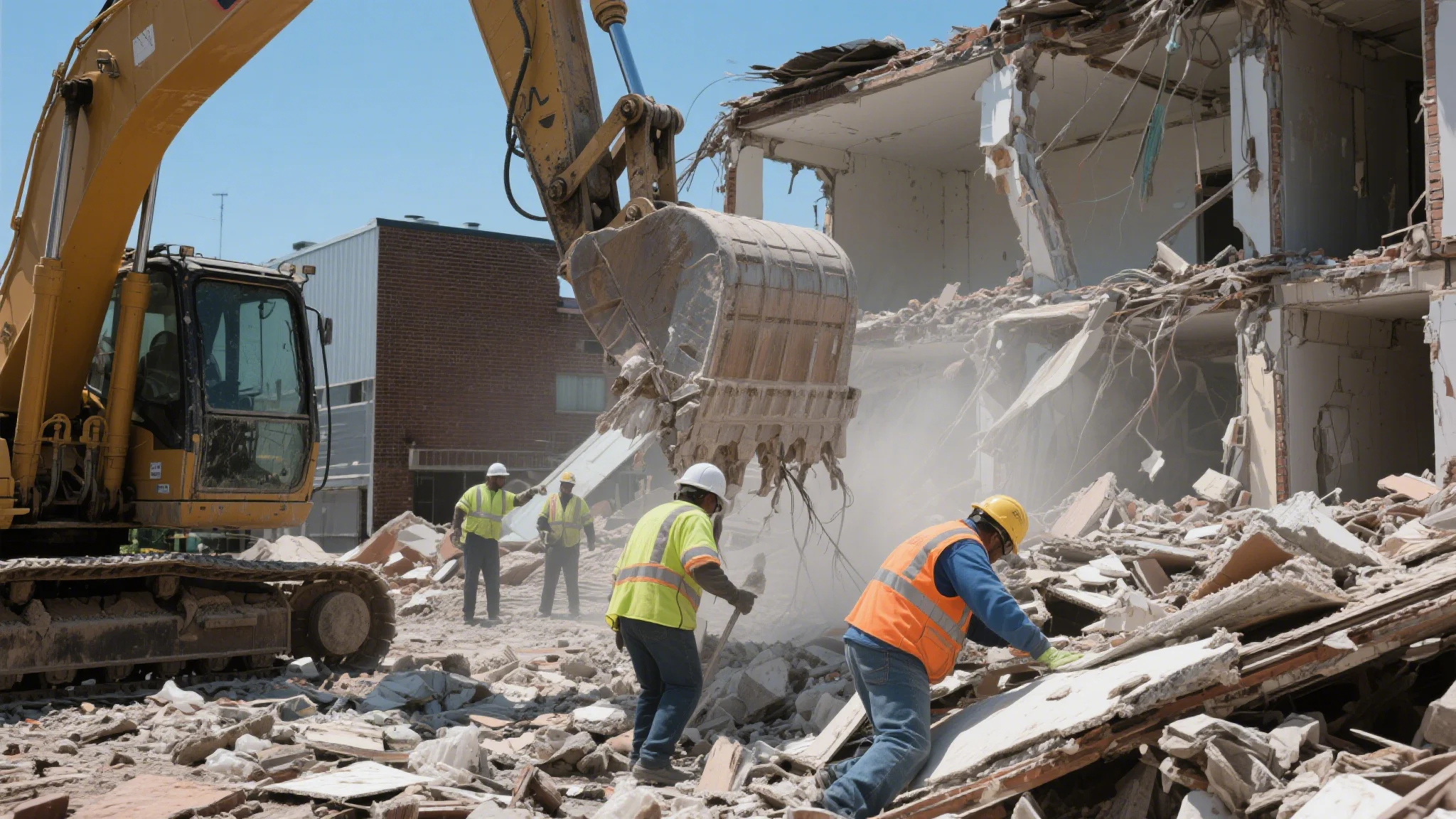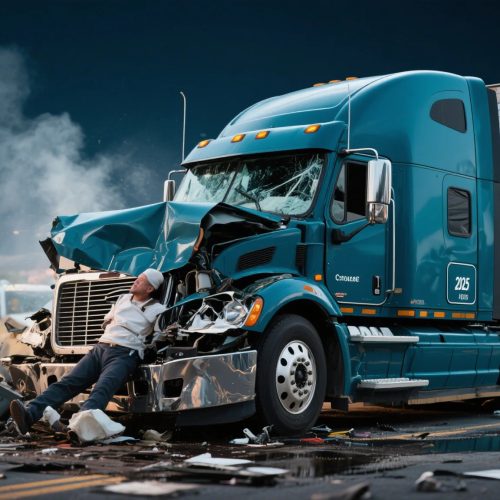Construction accidents are a leading cause of workplace injuries and fatalities in the United States. According to the Occupational Safety and Health Administration (OSHA), construction workers are at a higher risk of accidents due to the nature of the work, which often involves heavy machinery, heights, and hazardous materials. While OSHA regulations are designed to protect workers, many companies fail to comply with these standards, leading to preventable accidents and, ultimately, construction accident lawsuits.

In this article, we will discuss the five most common OSHA violations that frequently result in construction accidents and subsequent legal actions. By understanding these violations, construction companies can take steps to ensure compliance, reduce risks, and protect their workers.
1. Fall Protection Violations
One of the most common OSHA violations in construction is the lack of proper fall protection. Falls are the leading cause of death in the construction industry, accounting for nearly 40% of all construction-related fatalities. OSHA requires employers to provide fall protection for workers who are six feet or higher above a lower level. This includes the use of guardrails, safety nets, and personal fall arrest systems (PFAS).
Despite these regulations, many construction companies fail to provide adequate fall protection, leading to accidents such as fatal falls from scaffolds, ladders, or roofs. When such accidents occur, injured workers and their families often file lawsuits against the companies for negligence. Construction companies that fail to comply with OSHA’s fall protection standards can face not only hefty fines but also significant legal consequences.
To prevent fall-related accidents, construction companies must ensure that all workers are trained on fall protection equipment and that all necessary safety measures are in place. Employers should also conduct regular inspections of scaffolding, ladders, and other elevated work areas to ensure they meet OSHA standards.
2. Scaffolding Violations
Scaffolding is a common feature of construction sites, but improper setup, maintenance, or use can lead to serious accidents. OSHA regulations require that scaffolding be constructed and maintained in a manner that prevents collapse and provides adequate support for workers and materials. This includes ensuring that scaffolding is built on a level surface, properly tied off, and equipped with guardrails.
Despite these requirements, many construction companies cut corners when it comes to scaffolding, leading to accidents such as collapses, falls, and structural failures. These accidents often result in injuries or fatalities, which can lead to construction accident lawsuits. For example, if a worker falls from a poorly constructed scaffold due to missing guardrails, the company may be held liable for failing to provide a safe working environment.
To avoid scaffolding-related violations and accidents, construction companies must ensure that their scaffolding meets OSHA standards. This includes using only approved materials, properly training workers on scaffold setup and use, and conducting regular inspections to identify and address potential hazards.
3. Electrical Hazards
Electrical hazards are another common source of construction accidents and OSHA violations. Construction sites often involve exposed electrical wires, power tools, and equipment, all of which pose a risk of electrocution or arc flash injuries. OSHA regulations require employers to implement safety measures to protect workers from electrical hazards, such as using insulated tools, providing ground fault circuit interrupters (GFCIs), and ensuring that electrical systems are properly grounded.
Unfortunately, many construction companies fail to adequately protect their workers from electrical hazards. This can result in accidents such as electrocution, burns, and even fatalities. When such accidents occur, injured workers and their families may file lawsuits against the company for failing to provide a safe working environment.
To prevent electrical-related accidents, construction companies must adhere to OSHA’s electrical safety standards. This includes conducting regular inspections of electrical systems, providing workers with proper training on electrical safety, and using appropriate protective equipment.
4. Lack of Personal Protective Equipment (PPE)
Personal protective equipment (PPE) is a critical component of workplace safety, especially in high-risk industries like construction. OSHA requires employers to provide and ensure the use of PPE in various situations, such as working with hazardous materials, operating heavy machinery, or performing tasks that pose a risk of injury. Common types of PPE include hard hats, safety glasses, gloves, and steel-toe boots.
Despite these requirements, many construction companies fail to provide adequate PPE or fail to enforce its use. This can lead to accidents such as head injuries, eye injuries, and crushed feet, which can result in serious injuries or even fatalities. When such accidents occur, workers and their families may file lawsuits against the company for negligence.
To avoid these violations and accidents, construction companies must prioritize PPE compliance. This includes providing workers with the necessary PPE, ensuring that it is properly fitted and maintained, and enforcing strict policies on its use.
5. Lack of Training and Safety Programs
Lastly, one of the most common OSHA violations in construction is the lack of proper training and safety programs. OSHA requires employers to provide training on safety standards, hazard recognition, and the proper use of equipment. This is particularly important in high-risk industries like construction, where workers are exposed to numerous hazards on a daily basis.
Unfortunately, many construction companies fail to provide adequate training, leading to accidents caused by worker ignorance or lack of preparedness. For example, a worker who has not been trained on how to safely operate a power saw may accidentally cause a serious injury. These accidents often result in construction accident lawsuits, as the company is deemed negligent for failing to provide proper training.
To prevent these violations and accidents, construction companies must invest in comprehensive safety training programs. This includes providing workers with training on OSHA standards, hazard identification, and the safe use of equipment. Additionally, companies should regularly review and update their safety programs to ensure they remain effective and relevant.
In the first part of this article, we discussed the five most common OSHA violations that frequently lead to construction accident lawsuits: fall protection violations, scaffolding violations, electrical hazards, lack of PPE, and lack of training and safety programs. These violations not only pose a risk to worker safety but also expose construction companies to significant legal and financial consequences.
In this second part, we will delve deeper into the consequences of these violations and explore ways that construction companies can avoid them. By understanding the risks and taking proactive measures, companies can create a safer work environment, reduce their liability exposure, and avoid costly legal battles.
The Consequences of OSHA Violations
OSHA violations can have serious consequences for construction companies. In addition to fines, which can range from a few hundred to tens of thousands of dollars, companies may also face legal action if an accident occurs as a result of their violation. Construction accident lawsuits can be costly and time-consuming, and they can also damage a company’s reputation.
Moreover, OSHA violations can lead to increased scrutiny from regulators, which can result in more frequent inspections and audits. This can create a burden on company resources and divert attention from other important business activities.
How to Avoid OSHA Violations
To avoid OSHA violations and the associated consequences, construction companies must take proactive steps to ensure compliance with safety standards. This includes:
Conducting Regular Inspections: Companies should regularly inspect their worksites to identify potential hazards and ensure that all safety measures are in place. This includes checking for proper fall protection, scaffolding setup, electrical safety, and PPE use.
Providing Comprehensive Training: Employers must provide workers with training on OSHA standards, safety procedures, and the proper use of equipment. This training should be updated regularly to reflect new regulations and changes in the workplace.
Enforcing Safety Policies: Companies should establish and enforce strict safety policies to ensure that workers adhere to safety standards. This includes requiring the use of PPE, following proper procedures for scaffold setup and use, and reporting any safety hazards to supervisors.
Investing in Safety Equipment: Construction companies should invest in high-quality safety equipment and ensure that it is properly maintained. This includes providing workers with PPE, installing guardrails and safety nets, and using GFCIs to protect against electrical hazards.
Creating a Safety Culture: Finally, companies should foster a culture of safety in which workers feel empowered to speak up about safety concerns and take responsibility for their own safety. This can be achieved through regular safety meetings, safety awards, and recognition programs.
The Benefits of Compliance
While compliance with OSHA standards may require an initial investment of time and resources, it ultimately pays off in the form of reduced accidents, lower costs, and improved worker morale. By ensuring that their worksites are safe, construction companies can reduce their liability exposure, avoid fines, and protect their workers from harm.
Additionally, a safe work environment can improve productivity, as workers are less likely to be injured or distracted when they feel safe. It can also enhance a company’s reputation, making it easier to attract and retain skilled workers.
Construction accidents are a serious issue, and OSHA violations are a major contributing factor. By understanding the most common violations and taking steps to avoid them, construction companies can create a safer work environment, reduce their liability exposure, and avoid costly legal battles.
In conclusion, compliance with OSHA standards is not only a legal requirement but also a moral obligation. By prioritizing safety, construction companies can protect their workers, avoid accidents, and build a strong, sustainable business.
